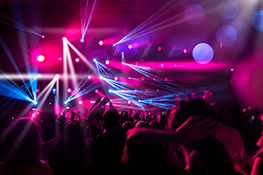Stage Lighting for Dance Performances: Showcasing Movement & Emotion
Illuminating the Art of Dance: The Crucial Role of Lighting
Dance, a captivating art form expressing stories and emotions through movement, relies heavily on effective stage lighting to amplify its impact. More than mere illumination, lighting design for dance performances is a collaborative art, shaping the audience’s perception and enhancing the choreography’s narrative. This article explores the intricacies of stage lighting for dance, highlighting its significance in accentuating movement, mood, and the overall artistic vision.
Understanding the Dance Choreographer’s Vision
Before any lighting design can begin, a deep understanding of the choreographer’s vision is crucial. This involves close collaboration, discussions about the intended mood, narrative arc, and key moments within the performance. The lighting designer must grasp the nuances of the choreography – the speed, the flow, the emotional shifts – to translate these aspects into a compelling visual language. This collaboration ensures that the lighting complements, rather than overshadows, the dance.
Choosing the Right Lighting Instruments for Dance
The choice of lighting instruments significantly impacts the final result. Different instruments offer varying capabilities, allowing for diverse lighting effects. For instance:
- Moving Heads: Offer unparalleled flexibility, allowing for dynamic changes in color, position, and gobo patterns, ideal for highlighting specific dancers or creating dynamic atmospheric effects.
- LED Par Cans: Provide vibrant, saturated colors and are energy-efficient, making them a popular choice for wash lighting and highlighting specific areas of the stage.
- Profile Spots: Deliver sharp, focused beams, perfect for creating dramatic silhouettes or highlighting individual dancers with precise control.
- Fresnels: Produce a soft, diffused light, ideal for creating a warm ambience or washing the stage in a gentle, even light.
The careful selection and placement of these instruments allows the lighting designer to sculpt the stage space effectively.
Creating Atmosphere and Mood Through Color and Light
Color plays a pivotal role in setting the emotional tone. Warm colors like oranges and reds evoke feelings of passion and intensity, while cool colors like blues and purples can create a sense of serenity or mystery. The use of color gels and filters allows the lighting designer to subtly shift the mood throughout the performance, mirroring the emotional journey of the dance. Subtle shifts in light intensity can also underscore dramatic moments or transitions.
Highlighting Movement and Form Through Lighting Techniques
Effective lighting design for dance often employs specific techniques to enhance the visual impact of movement.
- Following Spots: Keeping the spotlight on specific dancers as they move across the stage, ensuring they remain visible and dramatically highlighted.
- Silhouetting: Using backlight to create dramatic silhouettes, emphasizing the dancer’s form and movement against a contrasting background.
- Cross-Lighting: Utilizing multiple light sources from different angles to sculpt the dancer’s body, adding depth and dimension to their movements.
These techniques, combined with the strategic use of shadows, can powerfully enhance the storytelling aspects of the choreography.
Technological Advancements in Dance Lighting
Modern technology continues to revolutionize stage lighting for dance. LED technology offers greater energy efficiency and color versatility. Advanced control systems allow for precise timing and synchronization of lighting cues with the choreography, creating incredibly nuanced and sophisticated lighting designs. Software like MA Lighting and Chamsys offer intuitive interfaces for programmers, empowering them to create complex and responsive light shows.
Conclusion: The Synergy of Dance and Light
Stage lighting for dance is more than just illumination; it’s a collaborative art form that transforms movement into a captivating visual spectacle. By understanding the choreography, employing diverse lighting instruments and techniques, and embracing technological advancements, lighting designers can amplify the emotional resonance and artistic impact of dance performances. The result is a powerful synergy between light and movement, creating an unforgettable experience for both the performers and the audience.


 Auditorium Construction Services
Auditorium Construction Services 